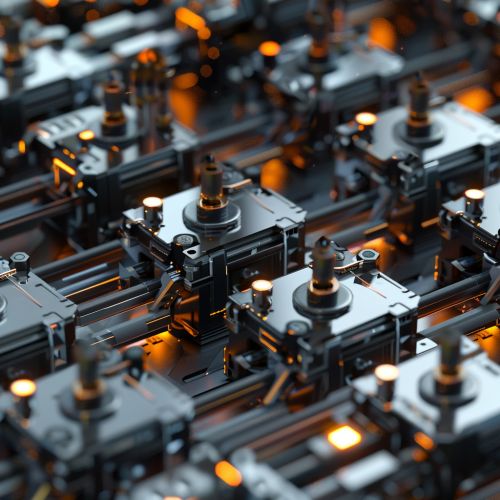Redundancy (engineering)
Overview
Redundancy in engineering is a design principle that aims to increase the reliability of systems and reduce the chances of failure. It involves the duplication of critical components or functions in a system with the intention of increasing reliability of the system, usually in the case of a backup or fail-safe. Redundancy can be applied in various fields of engineering including mechanical, electrical, structural, and software engineering.
Concept
The concept of redundancy is rooted in the principle of 'fail-safe' design. The idea is to make a system resilient to failures by duplicating critical components or functions. This duplication ensures that if one part of the system fails, the system as a whole can continue to operate. This is often achieved through the use of redundant elements, which can take over the function of a failed component. These elements can be identical to the original component (homogeneous redundancy) or different but functionally equivalent (heterogeneous redundancy).


Types of Redundancy
There are several types of redundancy, each with its own advantages and disadvantages. The most common types are:
Active Redundancy
In active redundancy, all redundant components are operational at all times. This type of redundancy provides the highest level of reliability but also consumes the most resources.
Standby Redundancy
In standby redundancy, redundant components are kept in reserve and are only activated when a primary component fails. This type of redundancy is more resource-efficient than active redundancy but may result in a brief interruption of service when a failure occurs.
Hybrid Redundancy
Hybrid redundancy combines elements of both active and standby redundancy. Some components are kept in active operation, while others are kept in standby mode.
Application in Different Fields of Engineering
Redundancy is a common design principle in many fields of engineering. Here are some examples:
Mechanical Engineering
In mechanical engineering, redundancy is often used in safety-critical systems such as aircraft. For example, an aircraft may have multiple hydraulic systems so that if one fails, the others can continue to operate.
Electrical Engineering
In electrical engineering, redundancy is commonly used in power supply systems. For example, a data center may have multiple power sources and backup generators to ensure continuous operation.
Structural Engineering
In structural engineering, redundancy is used to ensure the stability of structures. For example, a bridge may have multiple support columns so that if one fails, the others can support the load.
Software Engineering
In software engineering, redundancy is used to ensure the reliability of software systems. For example, a cloud service may have multiple servers running the same service so that if one fails, the others can continue to serve requests.
Benefits and Drawbacks
The primary benefit of redundancy is increased reliability. By duplicating critical components or functions, a system can continue to operate even if a part of it fails. This is particularly important in safety-critical systems, where a single failure can have catastrophic consequences.
However, redundancy also has its drawbacks. The most obvious one is increased cost. Duplicating components or functions increases the cost of a system, both in terms of initial investment and ongoing maintenance. Furthermore, redundancy can also increase the complexity of a system, making it harder to design, build, and maintain.
Conclusion
Redundancy is a fundamental principle in engineering design that aims to increase the reliability of systems. While it comes with increased cost and complexity, the benefits of increased reliability and resilience often outweigh these drawbacks, particularly in safety-critical systems.
